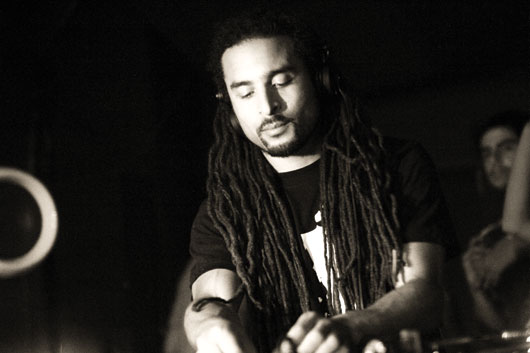Building an Iconic Sound: Mala
2010 hasn’t exactly been a banner year for dubstep. Wobble-craving bros are threatening to take […]

Building an Iconic Sound: Mala
2010 hasn’t exactly been a banner year for dubstep. Wobble-craving bros are threatening to take […]

2010 hasn’t exactly been a banner year for dubstep. Wobble-craving bros are threatening to take over the scene, each month an obscure new musical strain further splinters the genre, and the music is taking more and more whippings from critics and tastemakers alike. Nevertheless, even with all the mud thrown in dubstep’s direction, a few of its originators remain pretty much untouchable, both in terms of respect and their continued dedication to moving the music into the future. Mala (the south London producer known to his mum as Mark Lawrence) is one such producer. Not only has he been instrumental in keeping the extremely bass-heavy style evolving, but he and his Digital Mystikz partners-in-crime Coki, Loefah, and Sgt. Pokes are also responsible for continually bringing dubstep to the masses via their genre-defining DMZ night in Brixton. We tapped Mala for a few tips on how he crafts his crazy, unrelenting low-end sound, both from the practical and philosophical standpoints.
1 – Adopt the Right Approach
I’m not sure how my sound was created exactly, but for me, music is about uncompromised expression. I feel music is a chance to be honest about what I feel and want to say. I think words are too often abused, misunderstood, and sometimes overrated, so for me, instrumental music speaks directly and personally. Frequencies shape the world we live in.
2 – Be Consistent
I don’t really have a preferred synth, as I always enjoy working with new sounds, either from hardware or software. I consistently use a soft synth made by Spectrasonics called Trilogy. I’d say I create 99% of my subs and basslines from it. They released a new-and-improved version last year called Trillian, which, for me, works even better than Trilogy. So I’m happy! It’s seriously solid software for when you need that weight in your sound.
3 – Find What Works Well…
I use Battery by Native Instruments for programming my drums. I find Native Instruments plug-ins to be really user-friendly. Manipulating and controlling sounds is really simple but deep. Its drum-kit library is solid, too. I love this plug-in because you can import your own sounds, which is more important than the presets. Simple and easy to use, but when you explore, you see its deep capabilities.
4- …And Stick With It
It’s fair to say Propellerhead Reason was like school for me. Back in 2000, it was what I started making music with. Redrum was perfect for drum programming. It had some heavy presets and the choice to bring in your own samples. I used the Subtractor virtual synth layered with Malström graintable synthesizer for sub and bass, and the NN-XT sampler did everything else. Importing my own sounds and being able to mash them up was all I wanted to do. It’s a real friendly program to use, which allows me to get ideas down quickly. I think it’s one of the most important factors to consider when new to making music. Ken Taylor
5- Then Arrange Your Sounds Accordingly
I tend to start with more natural-sounding synths than the mental ones. So for pads and melodies, orchestral sounds layered with alien sounds usually work best for me… get some movement between the layers. Gforce’s M-Tron is a great-sounding synth… off harmonics with a unique texture. I have some hardware synths, too. They help me understand more about sound every time I create.
Digital Mystikz’s “Education” b/w “Horrid Hen” is out this month on DMZ.
For more of Building an Iconic Sound, read our feature with Squarepusher.

